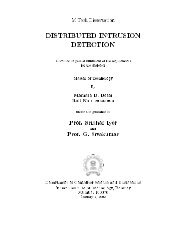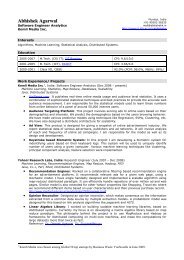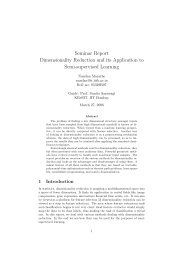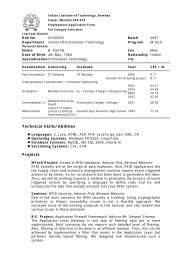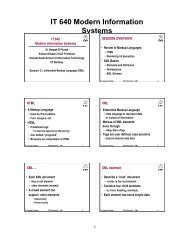Final Thesis - KReSIT - Indian Institute of Technology, Bombay
Final Thesis - KReSIT - Indian Institute of Technology, Bombay
Final Thesis - KReSIT - Indian Institute of Technology, Bombay
You also want an ePaper? Increase the reach of your titles
YUMPU automatically turns print PDFs into web optimized ePapers that Google loves.
4.6. Scheduling 33<br />
is requested from the ST, so the number <strong>of</strong> slots allocated to downlink are more than the<br />
slots allocated to uplink. Here downlink slots and uplink slots are <strong>of</strong> contiguous slots. For<br />
making this schedule there are number <strong>of</strong> scheduling algorithms. We explain two such<br />
algorithms here and also say how we implemented.<br />
4.6.1 Round Robin Scheduling<br />
This is a basic scheduling algorithm. Downlink and Uplink slots can further be divided<br />
into slots. These both are contiguous in a frame. In our protocol as we are following Multi<br />
Sector TDM approach, opposite sectors can be transmitted in parallel. Slots are assigned<br />
STs’s in a round robin fashion. It doesn’t have any priority while scheduling. It is<br />
starvation-free algorithm.<br />
4.6.2 Smoothed Round Robin Scheduling (SRR)<br />
Ordinary round robin schedulers are well known for their burstiness in the scheduling<br />
output. In order to overcome this problem, SRR codes the weights <strong>of</strong> the flows into<br />
binary vectors to form a Weight Matrix, then uses a Weight Spread Sequence (WSS),<br />
which is specially designed to distribute the output more evenly to schedule. It preserves<br />
Θ(1) time complexity by avoiding the time-stamp maintenance employed in various Fair<br />
Queueing schedulers. The basic idea <strong>of</strong> SRR is scanning <strong>of</strong> the WSS and the corresponding<br />
Weight Matrix. The WSS is scanned term by term. When the current term is element<br />
i, column k−i <strong>of</strong> the Weight Matrix (where k is number <strong>of</strong> columns <strong>of</strong> Weight Matrix) is<br />
selected[8].<br />
Table 4.2 are used in the algorithm that is going to be described.<br />
Algorithm There are three asynchronous actions, namely, Schedule, Add flow, and<br />
Del flow. Each action is triggered by some events. The Schedule function is as listed in<br />
Algorithm 4.6.2.<br />
local variable: f, col {f, col are the current row and current column <strong>of</strong> the M respectively}<br />
P c = 1<br />
P dl = header k−1 → next {initialization}





